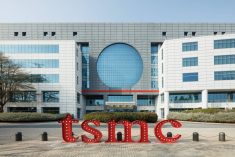It’s said that the big money, in gold rushes of yore, wasn’t in the gold miners but in those who supplied the picks and shovels. Vendors of sins, booze and brothels also did well. With this issue we’ll have a look at companies that, while not wholly reliant on alternative energy, stand to benefit from its adoption.
One such category is the miners — not of gold, but of many other minerals. (Disclosure: I have an interest in those companies asterisked (*) and am not hereby making recommendations, but simply providing a list of examples.)
Read Also

New, more comfortable cab available for Can-Am Defender UTVs
Farmers and ranchers looking to keep inclement weather out of the UTV get a new cab option on Can-Am’s three- and six-seater Defender DPS HD10 side-by-side models.
Albemarle is the world’s largest lithium producer benefiting from growth in the electric vehicle (EV) market. Copper is another key material in batteries and the electrical grid. Many of the largest miners in the world have copper in their portfolio, including Canada’s Teck Resources*, First Quantum Minerals, Lundin Mining* and Hudbay Minerals*, as well as U.S.-based Freeport McMoRan* — the world second largest copper miner — and Southern Copper. A note of caution is that miners are notoriously volatile and not suitable for buy-and-hold strategies.
A controversial aspect of EVs is that 70 per cent of the critical mineral cobalt is sourced from the Democratic Republic of Congo, with widespread use of child labour. Many of these mines are owned by Chinese investors, who account for aggregate control about 50 per cent of the world’s cobalt production and over 75 per cent of its refining. China also dominates the rare earth category of minerals, with 60 per cent of production and 85 per cent of processing. Rare earths — remember all those weird-sounding names from your high school periodic table — are relatively minor in quantity but critical in composition for almost all electronic applications.
There are a few North American companies involved with cobalt including Freeport McMoRan* and Wheaton Precious Metals*. Those involved with rare earths are small and speculative. including MP Materials, Energy Fuels and Canadian-based NioCorp Developments and Neo Performance Materials. As rare earth companies are speculative, I chose an exchange-traded fund (ETF) for exposure.

Upgrading electrical infrastructure is critical for increasing demands. Engineering and construction companies benefit from building wind and solar farms as well as grid improvements. Canadian-based Stantec* and WSP Global and any of the similar U.S. companies like MasTec*, Fluor or Emcor Group. While I generally aim to hit singles and doubles with my investments, I hit a home run with Guelph-based Hammond Power Systems*, manufacturing transformers.
Building efficiency is also a focus, with many companies involved in insulation and building control systems such as TopBuild, Lennox, Carrier or Honeywell*.
Hydrogen and fuel cells are an emerging area, although Canadian-based Ballard has traded publicly for 30 years. It was an epic speculation in 2000 when it traded for almost $200 per share. It has never made money and seems to survive on government subsidies. U.S.-based Plug Power has a similar history. If I were investing in hydrogen, to reduce its speculative nature I would probably do so through an ETF or through one of the industrial gas suppliers, such as Air Products and Chemicals. Large multinational energy companies Shell*, Exxon* and Chevron have announced significant commitments to hydrogen.
The last, but one of the most important, beneficiaries of the move to renewable energy is you. Farmers have been suppliers of grain and oilseeds to the biofuels industry for years. While biofuels represent less than one per cent of the total worldwide energy mix, they have been growing about six per cent per year, faster than total energy growth. While currently a large portion of grain and oilseed demand, the industry started as a way to utilize surplus grain from rapidly-improving agricultural practices.
From an investment perspective, there are a few small pure-play biofuel companies such as Green Plains and REX American Resources but for the most part it’s the traditional grain handlers and processors such as ADM and Bunge that dominate the biofuel industry. When Cenovus acquired Husky in 2021, it inherited two large ethanol plants. In my former corporate life, I was involved helping Husky convert its Manitoba plant from wheat to corn, helping propel the emerging corn market in the province.
It is difficult to scratch the surface of investment opportunities around renewable energy. I hope the past three articles have given you a sense of the breadth of the topic, the enormity of the project, and how China currently dominates alternative-energy supply chains. I suspect I will always own more oil and gas than alternative energy investments and, contrary to popular urbanite and political opinion, traditional energy is likely to dominate the landscape long beyond my years. There are, however, valid reasons to supplement traditional energy with new sources, while always emphasizing efficiency and conservation.
















